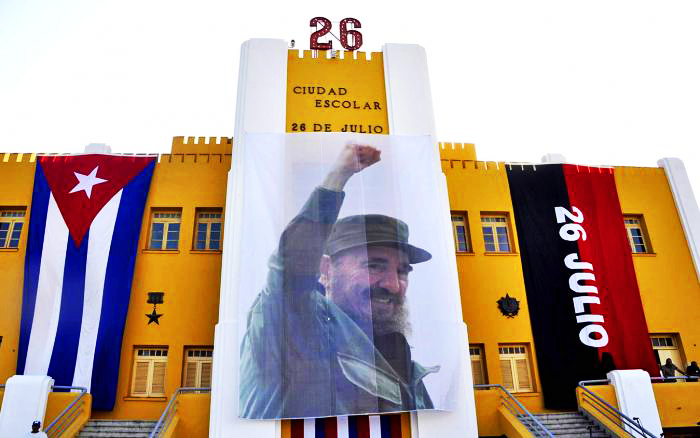
The history of Cuba would never be the same after the Moncada feat, which shattered the myth that it was impossible to fight against a repressive army, overcome seemingly insurmountable difficulties and setbacks, regroup the revolutionary forces after enduring imprisonment, consolidate their position in the Sierra and the Llanos, and triumph.
There was the concept even in revolutionary sectors and honourable people, because of frustrated actions, that a revolution could not be done against the army, and it was precisely this prophecy that set out to challenge Fidel Castro in his action by organizing the attacks on the Moncada and Carlos Manuel de Céspedes barracks on July 26, 1953, 72 years ago.
The March 10 coup d'état by Fulgencio Batista was the trigger that led the young lawyer to conceive a strategy of armed struggle.
After preparing to confront the dictatorship, without being penetrated by the regime's intelligence services, the so-called Centennial Generation of José Martí's birth departed for the eastern part of the country, where the actions would take place.
After preparing to confront the dictatorship, without being penetrated by the regime's intelligence services, the so-called Centennial Generation of José Martí's birth departed for the eastern part of the country, where the actions would take place.
Fidel met with the revolutionaries at Granjita Siboney, on the outskirts of Santiago de Cuba, before heading off to take over the Santiago de Cuba military fortress, and told them: "You may win in a few hours or be defeated; but either way, listen carefully, comrades! The movement will triumph. If we win tomorrow, what Martí aspired to will be achieved sooner. If the opposite happens, the gesture will serve as an example to the people of Cuba to take up the flag and move forward. (…)"
A poem by the combatant Raúl Gómez García was also read, which summarized the decision to fight and one of the stanzas that gave it the title said: "We are already in Combat! /For defending the idea of all those who have died/ To throw the bad people out of the historic Temple/ For the heroic gesture of Maceo/ For the sweet memory of Martí".
The revolutionary force that would carry out the attack on the military fortress was made up of around 100 young people of humble working-class origins, peasants, employees, and students, under a unitary conception and clandestine measures and compartmentalization.
At dawn on Santa Ana, the combatants stormed the Moncada barracks, while the assault on the "Carlos Manuel de Céspedes" barracks was taking place simultaneously in Bayamo. The weapons, ammunition, and army uniforms that the attackers would use to increase the surprise were paid for by the revolutionaries themselves, contributing from their modest salaries or selling personal belongings.
The movement's leader led the group that attacked through post three of Moncada, and Raúl Castro and other men occupied the Palace of Justice, while Abel Santamaría reached the former Saturnino Lora Hospital, but the surprise was not achieved when a patrol encountered them.
The fighting was widespread and the guards of the Santiago de Cuba’s barrack became strong from their numerical superiority and in armaments against the revolutionaries.
The attack on the Bayamo barrack was also unsuccessful, as the initial plan failed and the garrison's fire from their positions spread, forcing the attackers to retreat.
Batista gave the order to kill the prisoners without restraint, and more than 50 revolutionaries were killed, many of them in the courtyard of the building with point-blank shots, almost in full view of the population.
Few survivors were arrested and sent to prison, among them Fidel, Raúl, and Juan Almeida.
Despite the defeat, the people recognized an indisputable leader who, in his self-defense before the court that tried him, known as "History Will Absolve Me," denounced the murders, exposed the evils of the prevailing regime, and announced his program, which began to be achieved during the stage of the insurrectional struggle in the Sierra Maestra until making the triumph of January 1, 1959, possible. (ACN) (Photo: Taken from the Internet)